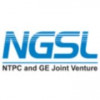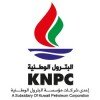Filter interviews by
Power Research & Development Consultants Power Systems Engineer Interview Questions and Answers
Power Research & Development Consultants Power Systems Engineer Interview Experiences
1 interview found
I applied via Campus Placement and was interviewed before Feb 2020. There were 6 interview rounds.
Interview Questionnaire
2 Questions
- Q1. What do you know about power systems ?
- Ans.
Power systems refer to the network of electrical components and devices that generate, transmit, and distribute electricity.
Power systems involve the generation of electricity from sources such as coal, natural gas, nuclear, wind, and solar power.
Electricity is then transmitted through high-voltage power lines to substations, where it is distributed to homes and businesses through lower-voltage lines.
Power systems also...
- Q2. How many of faults happen in power system
- Ans.
Faults in power systems are common and can vary depending on the system's size and complexity.
The number of faults in power systems can vary depending on the size and complexity of the system.
Faults can be caused by a variety of factors, including equipment failure, weather events, and human error.
Power system engineers work to design and maintain systems that are resilient to faults and can quickly recover from them.
T...
Interview Preparation Tips
Interview questions from similar companies

I appeared for an interview in Sep 2024, where I was asked the following questions.
- Q1. How do you start and stop a boiler feed pump safely?
- Ans.
Starting and stopping a boiler feed pump requires careful procedures to ensure safety and efficiency.
Check the pump and system for any leaks or damage before starting.
Ensure that the boiler is at the correct pressure and temperature.
Open the isolation valves to allow water flow to the pump.
Start the pump using the control panel, monitoring for unusual noises.
Once the pump is running, check the pressure gauges to ensure...
- Q2. What are common vacuum pump failures and their causes? How do you check for vacuum leaks in a system?
- Ans.
Common vacuum pump failures include mechanical wear, seal leaks, and motor issues, often leading to performance loss.
Mechanical wear: Bearings and rotors can wear out over time, causing reduced efficiency.
Seal leaks: Damaged or worn seals can lead to loss of vacuum, impacting system performance.
Motor issues: Electrical failures or overheating can prevent the pump from operating correctly.
Contamination: Particles or flu...
- Q3. How do you start and stop a CEP safely? What are the possible causes of cavitation in a CEP, and how can it be avoided?
- Ans.
Safe operation of a CEP involves careful start/stop procedures and understanding cavitation causes and prevention.
Start the CEP gradually to avoid sudden pressure changes.
Monitor system parameters like flow rate and pressure during startup.
Stop the CEP by gradually reducing the load to prevent water hammer.
Cavitation can occur due to low inlet pressure or high fluid velocity.
To avoid cavitation, ensure adequate NPSH (N...
- Q4. If a blackout occurs in your plant, what immediate actions will you take?
- Ans.
In case of a blackout, immediate actions include assessing the situation, ensuring safety, and restoring power efficiently.
Assess the situation: Check if the blackout is localized or widespread.
Ensure safety: Activate emergency lighting and guide personnel to safe areas.
Notify relevant personnel: Inform management and maintenance teams about the blackout.
Check backup systems: Verify if backup generators are operational...

I applied via Naukri.com and was interviewed in May 2021. There were 3 interview rounds.
Interview Questionnaire
2 Questions
- Q1. Types of maintenance
- Ans.
Types of maintenance include corrective, preventive, predictive, and proactive maintenance.
Corrective maintenance involves fixing a problem after it has occurred.
Preventive maintenance involves regularly scheduled maintenance to prevent problems from occurring.
Predictive maintenance involves using data and analytics to predict when maintenance is needed.
Proactive maintenance involves identifying and addressing potentia...
- Q2. Pm, CBM, breakdown
Interview Preparation Tips

I appeared for an interview in Sep 2016.
Interview Questionnaire
2 Questions
- Q1. Tell us about yourself
- Ans.
I am a recent graduate with a degree in Computer Science and a passion for coding and problem-solving.
Graduated with a degree in Computer Science
Passionate about coding and problem-solving
Completed internships at tech companies
Participated in coding competitions
- Q2. Technical questions on heat exchangers.
Interview Preparation Tips
Experience: Online Aptitude test. I attempted the verbal section firstly, since I was more confident on that part. After I was done with it, I opted for the questions of my domain and lastly the quant. Speed and accuracy were the deciding factors in that test.
Duration: 45 minutes
Total Questions: 45
Round: Group Discussion
Experience: I had chosen to speak for the Sales and I was the first one to counter the person who spoke for R&D. Key was to let other's speak, listen carefully to your counterparts and have a positive body language throughout to make the moderator feel that you are very much a team person as well as you've your own standpoint.
Duration: 20 minutes
Round: Technical Interview
Experience: Technical interview was conducted face to face with 2 interviewers.
Tips: Accept what you don't know but steer the interviewers to your strong points. You have to be clear on your favorite subjects or on the previous internships or trainings done. The person sitting opposite to you will try to puzzle you on your own answers. Try to be very clear on what you say.
Round: HR Interview
Experience: HR interview was over phone call. What I felt as to crack a interview, you don't have to be too clever.
Tips: Don't panic and keep your mind free of any expectations beforehand. That's all about my personal experience. :)
College Name: Jadavpur University, Kolkata

Senior Engineer Interview Questions & Answers
NTPC GE Power Servicesposted on 14 Jun 2024
(2 Questions)
- Q1. Relay protection
- Q2. Transformers protection

Assistant Manager Interview Questions & Answers
NTPC GE Power Servicesposted on 26 Jul 2024
(2 Questions)
- Q1. CT knee point testing
- Q2. Privious experience of Substation Maintenance and incedent
- Ans.
I have 5 years of experience in substation maintenance, including incident response and resolution.
Managed regular maintenance schedules for substation equipment
Responded to and resolved incidents such as power outages or equipment failures
Implemented safety protocols to prevent future incidents
Trained team members on proper maintenance procedures
Collaborated with engineers to improve substation efficiency

I applied via Referral and was interviewed before Jul 2022. There were 3 interview rounds.

(1 Question)
- Q1. About Self Introduction
(3 Questions)
- Q1. About Pipeline related codes
- Q2. Ndt related codes & criteria
- Q3. Tlp related standards
Interview Preparation Tips

Senior Engineer Interview Questions & Answers
Vcs Quality Servicesposted on 7 Apr 2024
(1 Question)
- Q1. GI/MDPE Related Question

Assistant Manager Interview Questions & Answers
NTPC GE Power Servicesposted on 9 Oct 2024
I applied via Referral and was interviewed in Sep 2024. There was 1 interview round.
(7 Questions)
- Q1. What is main reason for belt joint failure?
- Ans.
The main reason for belt joint failure is usually due to improper installation or maintenance.
Improper installation of the belt joint, such as incorrect alignment or tensioning
Lack of proper maintenance, leading to wear and tear of the joint
Use of low-quality materials for the joint
Excessive load or stress on the belt joint
Environmental factors like temperature or humidity affecting the joint
- Q2. What was the alignment maximum tolerance?
- Ans.
The alignment maximum tolerance refers to the maximum allowable deviation from the specified alignment.
Alignment maximum tolerance is the maximum allowable deviation from the specified alignment.
It is typically expressed in terms of a percentage or a specific measurement unit.
For example, a machine part may have an alignment maximum tolerance of +/- 0.005 inches.
Exceeding the alignment maximum tolerance can lead to per
- Q3. How to replace the bucket wheel reclaimer luffing cylinder?
- Ans.
To replace the bucket wheel reclaimer luffing cylinder, follow these steps.
1. Shut down the machine and ensure all power sources are disconnected.
2. Remove any surrounding components that may obstruct access to the luffing cylinder.
3. Use appropriate tools to disconnect the hydraulic hoses and fittings from the cylinder.
4. Support the weight of the cylinder as it is removed to prevent damage to surrounding components.
5...
- Q4. What is different between JSA and HIRA?
- Ans.
JSA stands for Job Safety Analysis, focusing on specific job tasks, while HIRA stands for Hazard Identification and Risk Assessment, focusing on overall workplace hazards.
JSA is task-specific, focusing on individual job tasks and potential hazards
HIRA is broader, looking at overall workplace hazards and assessing risks
JSA involves breaking down a job into steps and identifying potential hazards for each step
HIRA involv...
- Q5. How create a PR in SAP?
- Ans.
To create a PR in SAP, you can use transaction code ME51N or ME21N.
Use transaction code ME51N to create a purchase requisition in SAP.
Enter the necessary details such as material, quantity, delivery date, etc.
Save the purchase requisition and it will be created in the system.
Alternatively, you can also use transaction code ME21N to create a purchase order directly.
- Q6. What is procedure of pulley replacement?
- Ans.
The procedure of pulley replacement involves identifying the faulty pulley, removing the old pulley, installing the new pulley, and testing the system.
Identify the faulty pulley by checking for any signs of wear or damage.
Use appropriate tools to remove the old pulley, such as a pulley puller or wrench.
Install the new pulley by aligning it properly and securing it in place.
Test the system to ensure the new pulley is fu...
- Q7. Explain the procedure of PTW?
- Ans.
PTW stands for Permit to Work, a procedure used to ensure that work is carried out safely in potentially hazardous environments.
PTW is a formal written system used to control certain types of work that are identified as potentially hazardous.
Before starting work, a permit must be obtained from a designated authority.
The permit outlines the work to be done, the hazards involved, and the necessary precautions to be taken...
Interview Preparation Tips
Skills evaluated in this interview

Senior Engineer Interview Questions & Answers
NTPC GE Power Servicesposted on 11 Sep 2021
I applied via LinkedIn and was interviewed in Mar 2021. There were 4 interview rounds.
Interview Questionnaire
2 Questions
- Q1. How did u help to your new organization?
- Q2. I will do my level best for which I really motivated for new position.
Interview Preparation Tips
Power Research & Development Consultants Interview FAQs
Tell us how to improve this page.
Power Research & Development Consultants Interviews By Designations
- Power Research & Development Consultants Engineer Interview Questions
- Power Research & Development Consultants Electrical Engineer Interview Questions
- Power Research & Development Consultants Technical Architect Interview Questions
- Power Research & Development Consultants Software Engineer Interview Questions
- Power Research & Development Consultants Project Engineer Interview Questions
- Power Research & Development Consultants Power System Studies Engineer Interview Questions
- Power Research & Development Consultants Associate Engineer Interview Questions
- Power Research & Development Consultants Engineering Assistant Interview Questions
- Show more
Interview Questions for Popular Designations
- Power BI Developer Interview Questions
- Power Plant Engineer Interview Questions
- Power Programmer Interview Questions
- Power Apps Developer Interview Questions
- Senior Power BI Developer Interview Questions
- Power Electronics Engineer Interview Questions
- Power Plant Manager Interview Questions
- Power Plant Shift Incharge Interview Questions
- Show more
Interview Questions from Similar Companies
Fast track your campus placements

|
Power System Engineer
61
salaries
| ₹2.5 L/yr - ₹7 L/yr |
|
Software Engineer
28
salaries
| ₹2.5 L/yr - ₹7.1 L/yr |
|
Engineer
27
salaries
| ₹2 L/yr - ₹5 L/yr |
|
Electrical Engineer
20
salaries
| ₹3.2 L/yr - ₹6.4 L/yr |
|
Software Developer
18
salaries
| ₹2.8 L/yr - ₹4 L/yr |

Sterling Oil Exploration & Energy Production

Kuwait National Petroleum Company

NTPC GE Power Services

Arabian Industries
- Home >
- Interviews >
- Power Research & Development Consultants Interview Questions >
- Power Research & Development Consultants Power Systems Engineer Interview Questions












